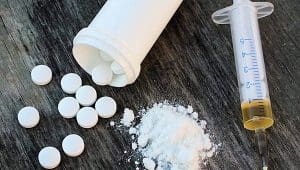Clarion staff
An update on drug toxicity deaths by the Office of the Chief Coroner of Saskatchewan confirms fentanyl has contributed to the deaths of five people in the area since 2013.
The office updated its drug toxicity deaths statistics on July 10. The data tables provided by the coroner’s office show the results from all death investigations that concluded between Jan. 1, 2010, and June 30, 2017.

Results from the Office of the Chief Coroner of Saskatchewan confirm that fentanyl has contributed to the deaths of five people in the area in the past four years
An explanation provided with the report states that the data includes the results of investigations from 2015, 2016 and 2017, but the data does not include the deaths from those years that are still under investigation. The data tables include information for all drug-related deaths in Saskatchewan, but data is broken down even further to highlight deaths involving opioid drugs and, more specifically, fentanyl.
The tables show information for drug toxicity deaths involving, in the case of fentanyl, type of drug, manner of death, place of death, gender and age group. The four manners of death include accident, suicide, homicide and undetermined, but none of the deaths were classified as a homicide.
A table of the confirmed deaths involving fentanyl by place of death from 2013 to 2017 shows four people died in Kindersley from 2013 to 2016, one confirmed case in each year. In 2015, there was also one fentanyl-related death in the Kindersley community.
[emember_protected for=”2″ custom_msg=’For more on this story, please see the July 26 print edition of The Clarion.’]
An official from the coroner’s office explained that the place of death is “sometimes initially recorded by the investigating coroner as the nearest community, such as a town or city.” The coroner’s office will at times change the place of location to more precisely reflect the location, the official clarified.
According to the coroner’s office, the death in the Kindersley community occurred in the Rural Municipality of Oakdale. In the table showing the place of fentanyl-related deaths, only one other rural municipality was identified. A single fentanyl death occurred in the RM of Pleasantdale in 2015.
Only the cities of Saskatoon and Regina had more fentanyl deaths than Kindersley from 2013 to 2017. In that time, there were 24 deaths in Saskatoon, eight deaths in Regina, four deaths in Kindersley, two deaths in Battleford, Moose Jaw and Swift Current, and one death in the rest.
Among the 15 communities listed in the place of death table, 2015 was the worst year for fentanyl-related deaths. There were 10 deaths in 2013, 11 deaths in 2014, 22 deaths in 2014 and seven in 2016. Only one concluded investigation in 2017 has involved fentanyl.
A table of the confirmed deaths related to fake oxycontin by place of death shows one person died in Kindersley in 2014, but it is unclear whether the fentanyl death in 2014 is related to the fake oxycontin death.
The data shows most fentanyl deaths occur among males between the ages of 20 to 29 and although a majority of deaths are males, five of the nine fentanyl deaths involving females were among females in the same age bracket. The second most deaths occur in people between the ages of 30 to 39.
There was one fentanyl death of a person 60 to 69 years old and one death of a person 70 to 79 years old. It was noted by the coroner’s office that all tables include accidental deaths that occurred in a hospital or a long-term care facility.
Since 2010, the breakdown of drugs identified in drug toxicity deaths include codeine, fentanyl, heroin, hydrocodone, hydromorphone, methadone, morphine, oxycodone, unknown opioids and even one death that might have involved the more powerful W-18.
Tablets found at the scene of the death involving a 25-year-old male were analyzed and found to contain both fentanyl and W-18, but the toxicology technology to test for W-18 in a body is unable to quantify W-18 under a certain level in a person’s blood, the coroner’s office noted.
[/emember_protected]
© Kindersley Clarion

